SECUREA Garden Toyokawa Yawata Station Minami (Toyokawa City, Aichi Prefecture)A resilient community that incorporates the concept of green infrastructure
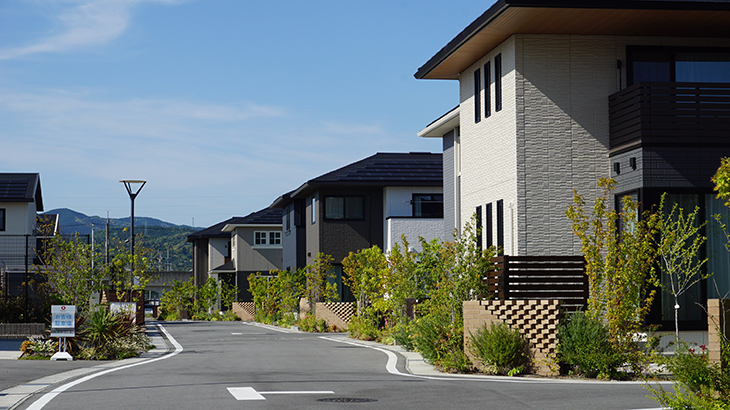
In this article, we spotlight a housing development initiative in Aichi Prefecture. Our goal is to create communities where people can live a lifetime in safety and security, and SECUREA Garden Toyokawa Yawata Station Minami is one such example of that. This is where we are developing a town that adopts green infrastructure, a concept that has been gaining attention in recent years, and that thoroughly incorporates the traditional culture of the region.
Overview
Toyokawa City, situated in the southeast of Aichi Prefecture and blessed with a mild climate, even during wintertime, strikes a fine balance between agriculture and industry owing to its easy access for transportation gained from a mostly central location in the Japanese archipelago. SECUREA Garden Toyokawa Yawata Station Minami started out as part of an urban development project anchored by Yawata Station and offering hospital, commercial and other facilities. In the development of communities, we use the keywords of “environment,” “safety and security,” “affluence,” “health,” and “liveliness,” but we also build upon these by creating favorable landscapes in harmony with the surrounding environment, utilizing renewable energy, developing living environments in consideration of residents’ health, and taking disaster and crime prevention measures, among other initiatives.

Subdivision Overview
Location: Shiratoricho, Toyokawa City, Aichi Prefecture
Total number of lots: 97 lots
Total development area: 20,810.84㎡
Site area: 140.15㎡ to 220.50㎡ per lot
(minimum to maximum area of 97 total lots)

This is the first* housing area in Toyokawa City that has eliminated utility poles. While creating a clear, unobstructed view of the beautiful sky-scape, it also enhances community safety. Specifically, collapsed poles or disconnected lines that result from earthquakes or typhoons pose the risk that road traffic could be disrupted during evacuations or power restoration, as well as of electric shock, and because there is the possibility of extensive harm to people and damage to buildings, negating the need for utility poles works to mitigate these risks.
*Toyokawa City's first housing estate to eliminate utility poles (July 2022 Daiwa House Industry research)


Preserving the safety and security of residents
Disaster mitigation measures based on the green infrastructure concept
The exterior design of the houses in the estate is based on the idea of “green infrastructure,” which originated in Europe and the United States in the 1990s and has been promoted in Japan since then. Except for the rutted areas of the approach-way portion and parking space, the entire residential area is covered with grass, plants, and gravel, reducing the paved area and allowing rainwater to percolate into the ground. In addition, the boundary with the waterway has been raised to counter the risk of flood damage from torrential rains, which have been on the increase in recent years.

What is Green Infrastructure?
Green infrastructure refers to the development of communities, along with parks, rivers, roads and other infrastructure maintenance, utilizing the diverse functions of the natural environment, including plants, waterfront areas, and soil. One example of this is the Daiwa House Group’s promotion of urban greening where we facilitate rainwater permeability through roadside planting and the creation of relaxing spaces with the development of urban parks. In this way, we play a role in supporting people’s affluent lifestyles in various aspects, including disaster prevention and mitigation, enhanced quality of life, preservation of ecosystems, and regional development.
On June 2, 2023, a linear precipitation event caused the Toyokawa area to experience the heaviest rainfall in its recorded history. Toyokawa City also suffered damage, with over 250 buildings flooded above floor level. While our subdivision was no exception to these heavy rains, the morning after the storm had ended the water had drained smoothly and the estate was able to avoid flood damage.
Around 16:00, June 2 (Fri.)

Around 9:00, June 3 (Sat.)

A local touch: Adopting a design that depicts Toyokawa Inari
The exterior design of the estate homes was inspired by the stone-paved walk-way to Toyokawa Inari, a local temple. In addition, the gravel used is locally produced, being the same as the river gravel pavement around the temple’s main hall. This raises awareness of the connection with local culture, and by using locally sourced materials also contributes to the reduction of CO2 emissions during delivery.

Stone-paved walk-way leading to the temple’s main hall
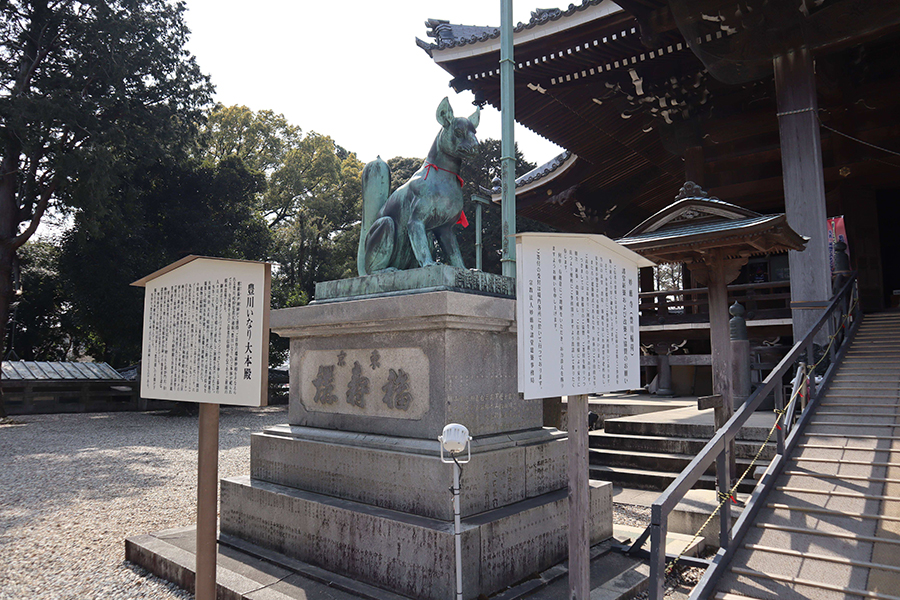
The graveled area around the main hall

Striped pattern in granite

Mixed river gravel of various colors

The area outside of the ruts is covered with gravel and plantings to reduce paved portions and improve the rate of rainwater absorption.
The striped pattern of the greening blocks, which are filled with locally produced gravel, incorporates the design feature of cobblestone pavement at Toyokawa Inari.
Development of a living environment that is people- and community-friendly, and in harmony with the natural environment
Having established “Community Development Guidelines,” we made rules stipulating that single-family houses in all 97 lots were to obtain third-party certification for environmentally friendly equipment specifications and energy-saving performance. We designated ZEH* as the standard specification, as it offers excellent heat insulation and airtightness, and enables comfortable living while reducing energy costs with the installation of photovoltaic systems. In addition, all houses are equipped with 5.4kWh storage batteries and HEMS (Home Energy Management System), which can secure power for home use in the event of power outages due to disasters such as typhoons and earthquakes. Through these efforts, we have created a pleasant environment for residents and the community, while existing in harmony with the natural environment.
*Net Zero Energy House. A house that aims to achieve a net annual primary energy consumption of zero by improving energy-saving performance through the introduction of heat insulation and energy-saving equipment and by generating energy through photovoltaic power generation, etc.

Photovoltaic systems

Lithium ion storage battery

HEMS (Home Energy Management System)
To remain a town long-cherished by the community
Another theme of this estate is “to create a community where people can live a lifetime.” We promote community development that also takes into consideration “biodiversity preservation,” another critical environmental issue, being eco-friendly so as to blend in with the local ecosystem and traditional culture, and so that residents will have a long-term attachment to their community.
Creating spaces of abundant greenery and comfort
We have established building agreements and our own Community Development Guidelines that work to maintain good landscaping and contribute to the preservation of biodiversity into the future. In the park and residential area, we plant mainly native species to facilitate the habitat of local flora and fauna, thereby connecting the ecological network with the surrounding area.
Specifically, we have established rules for planting mainly native species as symbol trees and corner trees, which play an important role in the community’s scenery, and customers can select their favorite species from a list of such trees. In addition, as some of these trees have branches growing upwards, rather than horizontally, their selection and planting creates uniform landscapes that bring to mind the Tezutsu Fireworks, a traditional local festival where pillars of fire are shot from handheld bamboo containers.
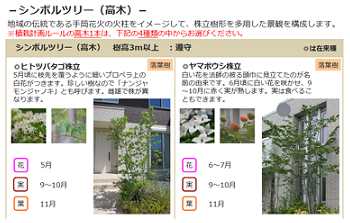
A portion of the Community Development Guidelines
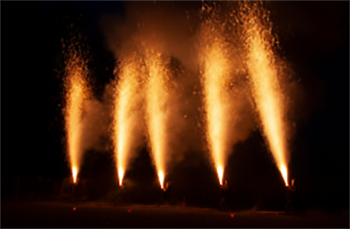
The “Tezutsu Fireworks,” a Toyokawa tradition
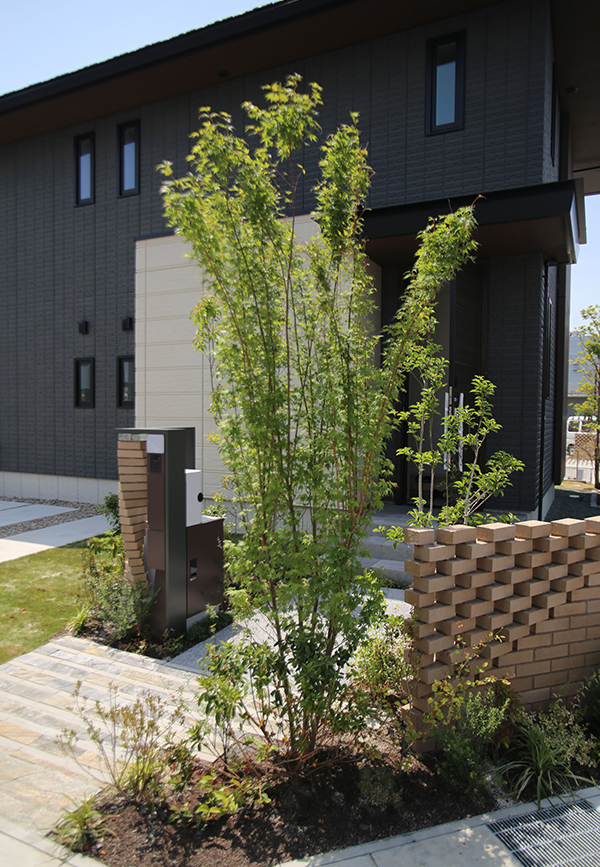
A Japanese maple that evokes the Tezutsu Fireworks
What does it mean to preserve biodiversity?
Preserving biodiversity means making an effort to protect Earth’s diversity of life and its habitats, and to use global resources in a sustainable manner. Since time immemorial, Japan has possessed a unique ecosystem owing to its characteristics as an island nation with a mild climate, and having various topographical features. We know that of the approximately 7,000 species of trees, grasses, and flowers native to Japan today, about 40% are found only in Japan.
The Daiwa House Group, committed to the development of communities, cares deeply about the quantity and quality of greenery to ensure that such urban development does not damage the ecosystem. Animals, insects, and other indigenous creatures that have evolved in the local climate easily inhabit native plants that have been naturally distributed in the area for ages. However, invasive species, including ornamental garden species, did not originally exist in the area but arrived from other regions due to human activities and may not fit in with the local ecosystem network. This is why the Group is advancing efforts to increase the presence of native species.
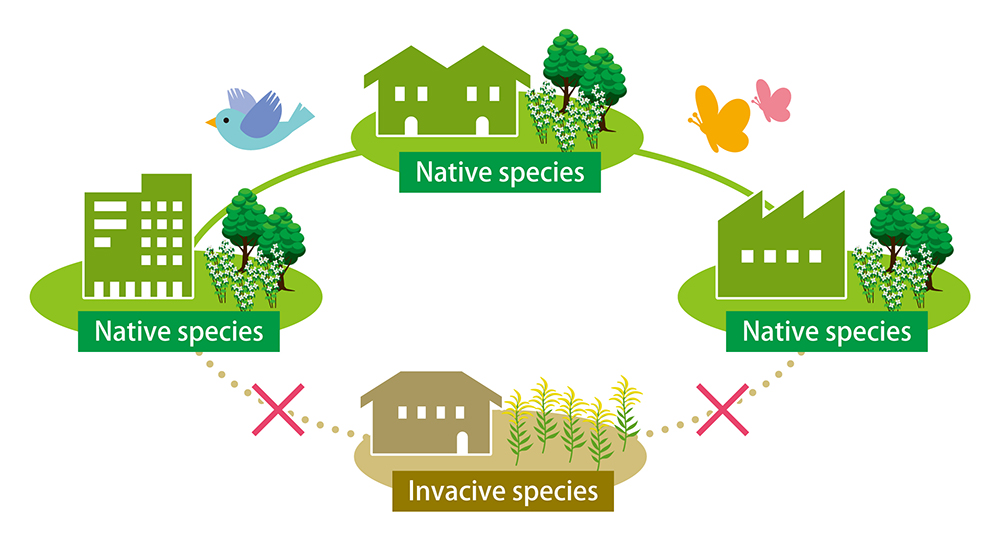
This initiative is being undertaken in all of our businesses, and we have confirmed that it is approximately three to five times more effective in preserving biodiversity in urban areas than if it had not been implemented.
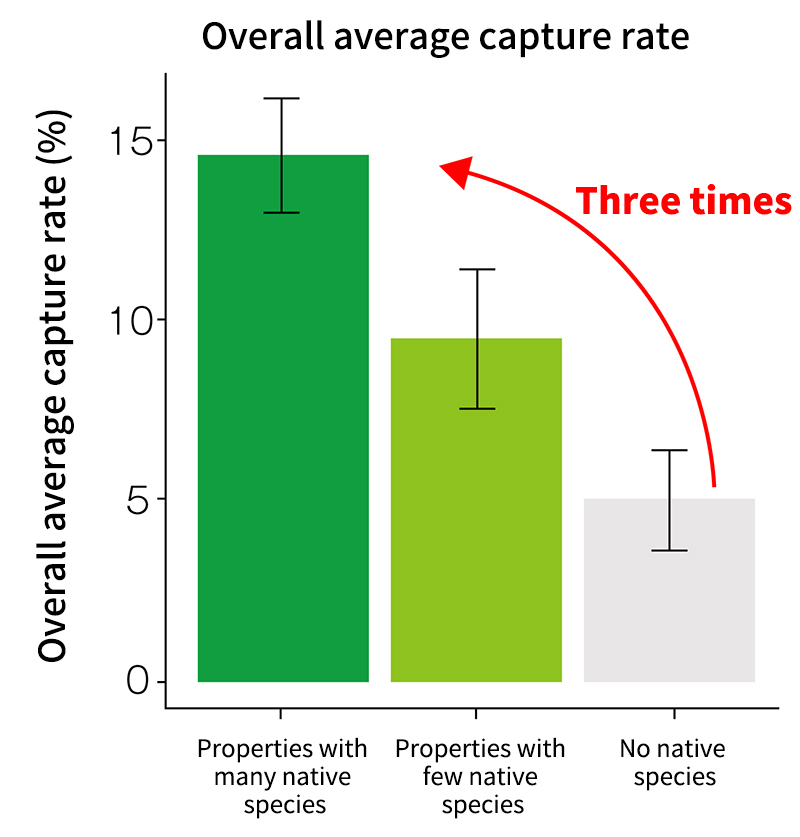
Degree of improvement in habitability for living creatures
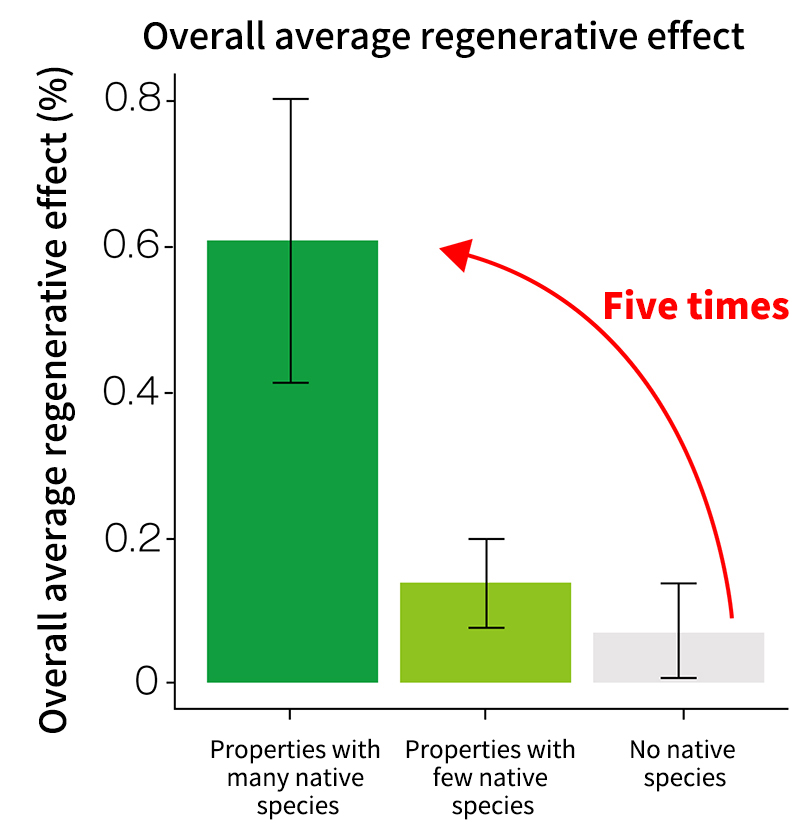
Effect of increasing organisms
Average capture rate and average regenerative effect for tree, bird, and butterfly species
Capture rate: Rate of how many butterflies, etc. can be attracted within a 5km area
Regenerative effect: Contribution to increase in population of birds, butterflies, etc. within a 1km area
A brick motif inspired by traditional culture
Whether it be for those who were born and raised here, others who have moved in from elsewhere, or children who will be born and grow up here, this community is their hometown. Representative of the traditional culture of the area is the “Tezutsu Fireworks,” and we have used that as our inspiration to design the materials and colors that make the housing estate’s exterior stand out and impress by reimagining the pillar of fire and rope-reinforced handheld bamboo containers . In addition to creating an opportunity for people to feel a sense of belonging to their community, we made use of bricks, a material with a long service life that leads to reduced CO2 emissions over their life cycle. Moreover, producing the bricks at a local factory in the Mikawa region of the prefecture also reduces CO2 emissions during delivery.
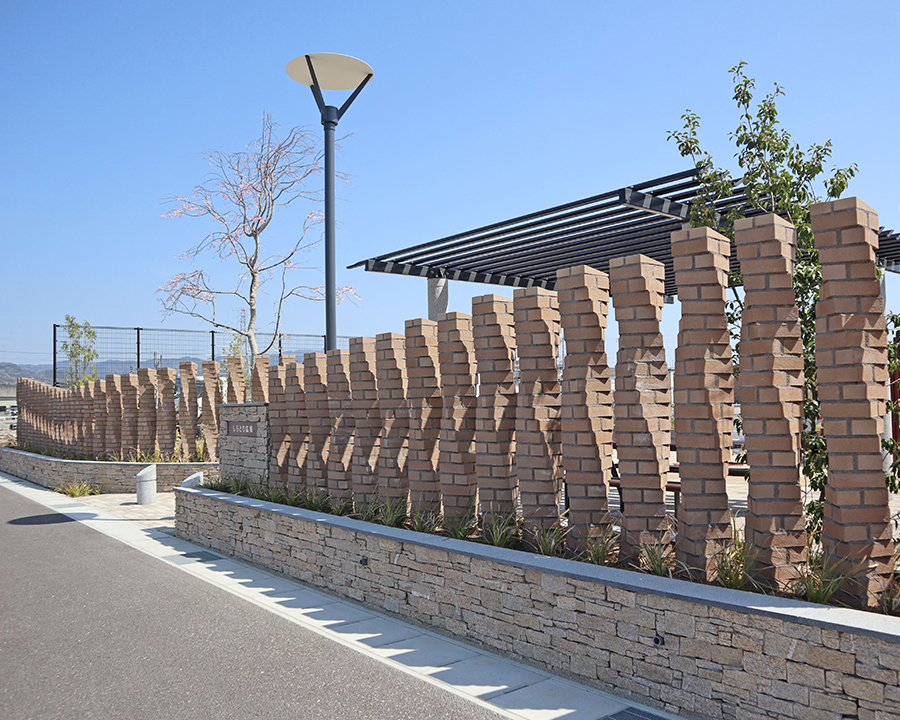
A park within the housing development
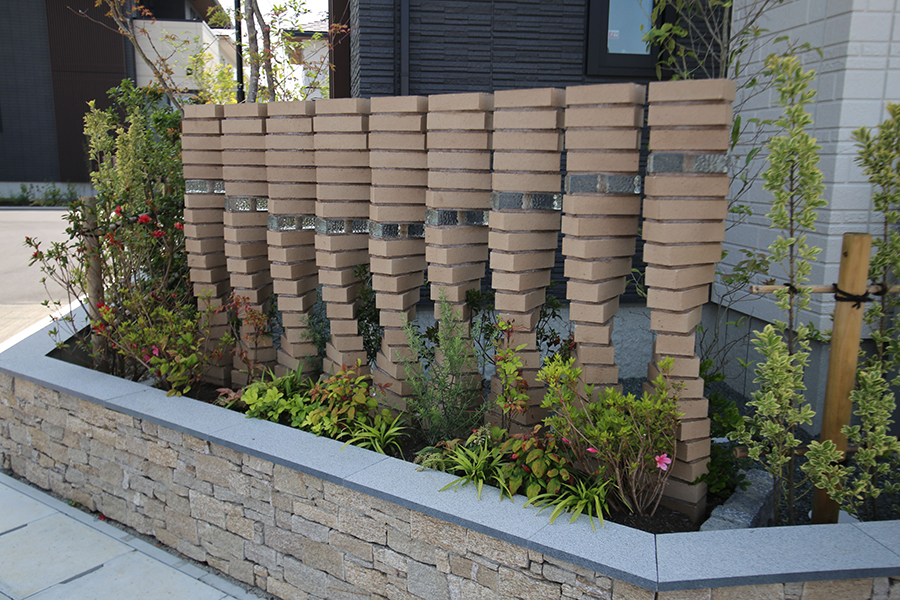
A gate area
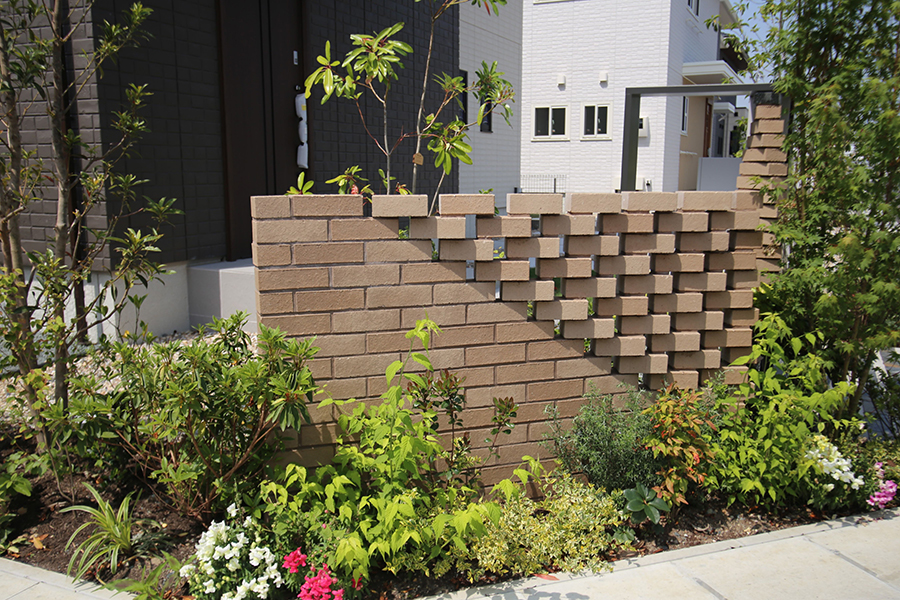
A corner area
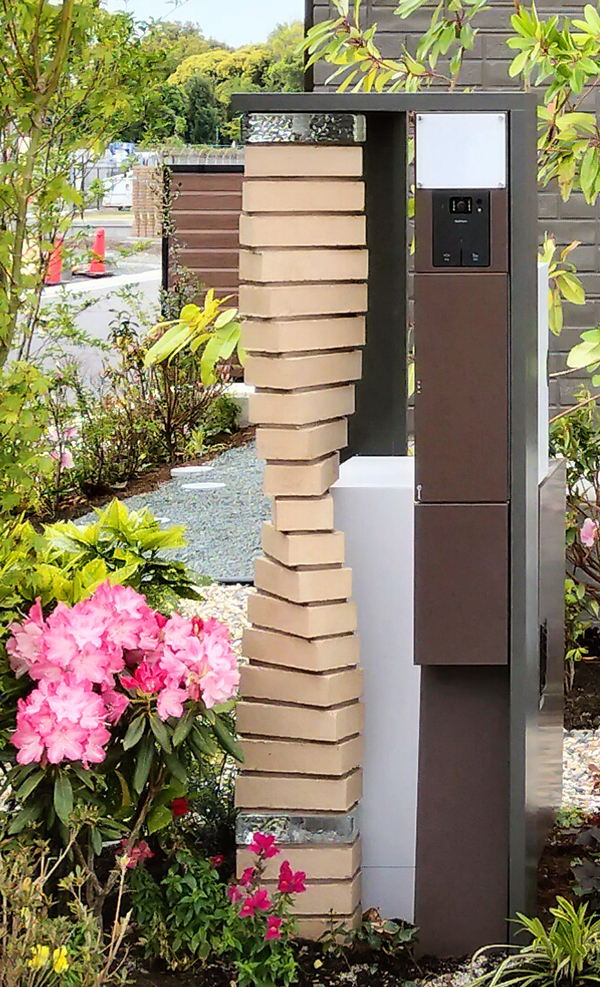
The gatepost outside each residence
Customer comment
We felt that adherence to ZEH was necessary in light of recent environmental issues, and solar panels and storage batteries are appealing because they can be used in the event of a disaster. In addition, it’s outstanding that you’ve created landscaping that shows the value of the connections the entire subdivision has with the area. And it’s such a wonderful, warm feeling when we can see the changing of the seasons with the blooming of the garden’s trees or when they are in their autumn colors.
(*Excerpt from comments of surveyed residents)
Comment from sales staff
A whole range of disasters are becoming crises that are an ever closer part of our daily lives, and considering this, we believe that “proper preparation for disasters so that our customers can live in long-term safety and security” is also linked to the value they gain when choosing our houses. So how do we perceive looming disasters and how is that perception reflected in our community development? We hope that by making our customers aware of our commitment to each and every planning element, we can provide them with even greater peace of mind.
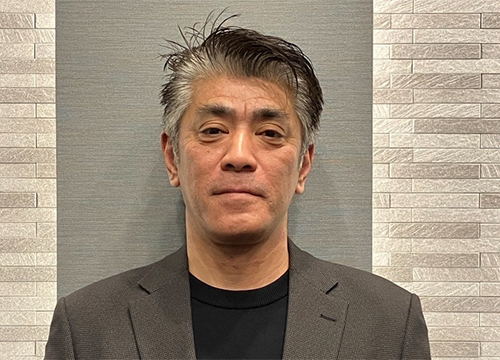
Okazaki Branch
Single Family Housing Sales Office
Manager
Takashi Nisikawa
Comment from housing planner
The questions were, how could we make people feel emotionally close to this town so that they would want to return even after they have grown up here and left the nest, and what was needed for the next generation to continue to live here with peace of mind? We constantly kept these in mind when thinking of our overall design. The creation of a community that residents will long cherish, is, we believe, what will work to minimize the resources used, and that will lead to finding solutions to environmental issues.
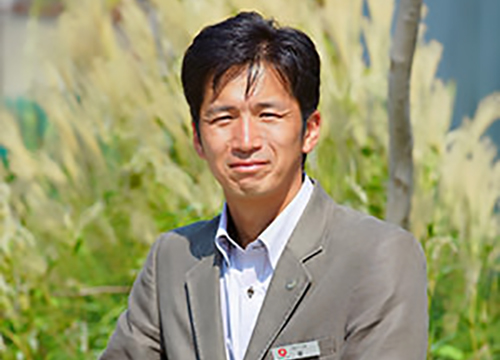
Tokyo Head Office
Single Family Housing Business Division
Design Department
Senior Engineer
Tomonori Tachi
* The information is current at the time of interviews (Dec. 2024).



